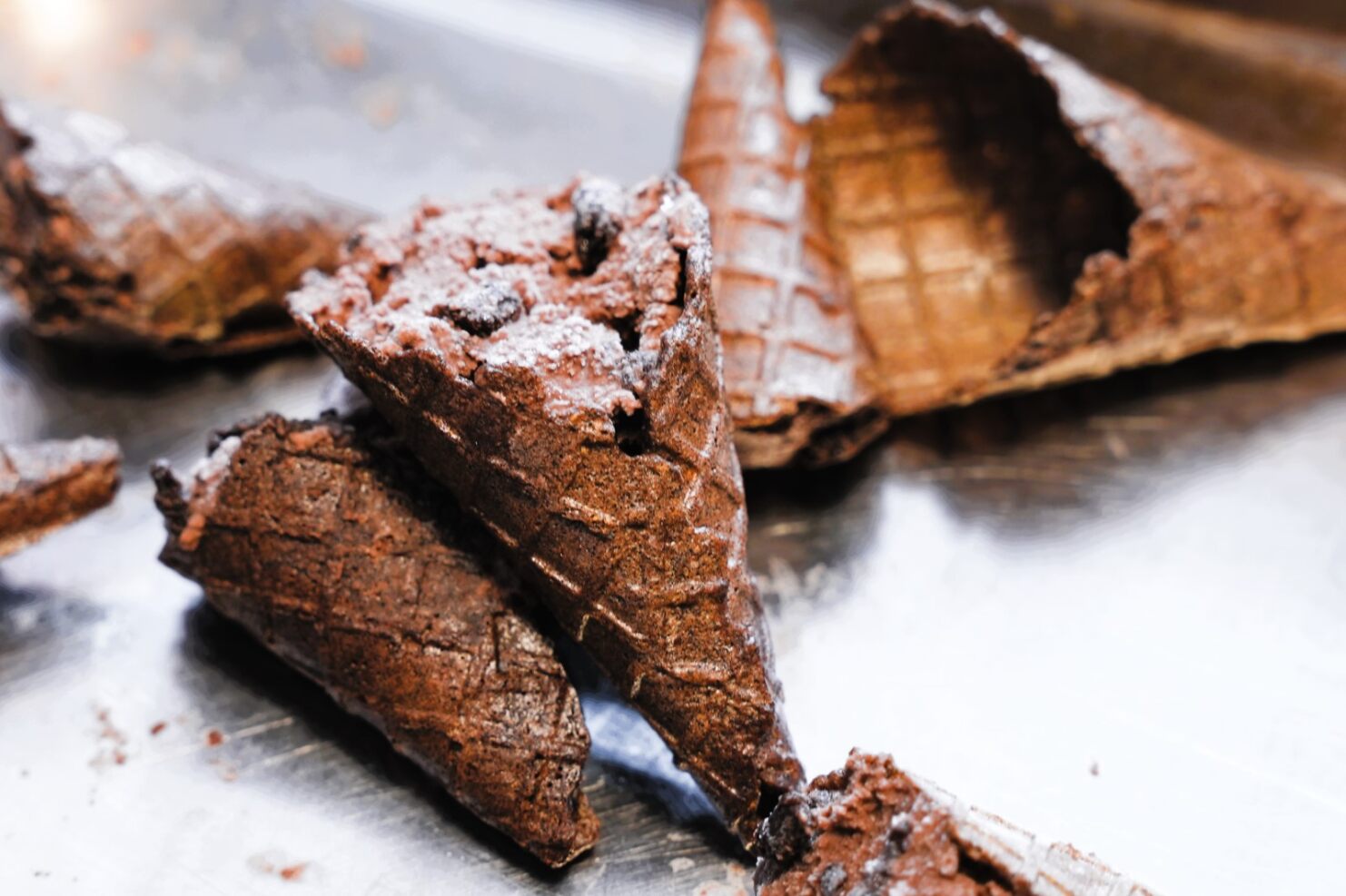Students developed four new food products from food waste
Every year, a number of Master’s students in food technology are given an assignment to develop proposals for new food products made from leftovers generated by the food industry. This year’s student groups presented four completely different, but all very tasty, variants. Read about them here!
– Publicerad den 31 januari 2024

Vegan hemp ice cream – ”Frozen hemptation”. Industrial hemp – not to be confused with cannabis – is widely considered to be a raw material with a future. The protein-rich seeds, with a taste reminiscent of walnuts, can be made into a milk or flour. The fibres in the stem can be used in textiles or building materials.
The students chose to make ice cream from hemp milk, whereas the cone is made from the press cake that is left when the oil is squeezed out of the seeds. A further environmental benefit is that hemp replaces imported soya that would otherwise be used in vegan ice cream.
The product is intended to be sold as a ”grab-and-go-ice cream” that could be picked up from the ice cream freezer for an estimated price of SEK 25. In addition to hemp, the ice cream contains ingredients such as rapeseed oil, coconut oil, chocolate and sugar as well as brownies made from the residual products of hempseed oil press cake.

Fried beetroot fingers. At present, many beetroots are thrown away, usually because they are too large and stringy. To give the overgrown beetroots a more dignified end, the students chose to grind them down as the foundation for a batter that is filled with goat cheese, fried and then frozen. It is a convenience food product that can be put directly into the frying pan and be eaten, for example, as part of a tapas plate or a snack between meals.

Vegan mushroom mayonnaise ”Svamponäs”. A lot of mushrooms are also thrown away because imperfect mushrooms are rejected by consumers, even though the mushrooms are actually in good condition. The students mixed and fried the rejected mushrooms and used them as an ingredient in a mayonnaise, as the umami taste of mushrooms lifts the flavour of the mayonnaise to a new level. Linseed flour was used instead of egg as an emulsifying agent. A jar is expected to cost SEK 45.

Herring balls the “Sill-y ball”. This group wanted to combine two traditional Swedish foods: meatballs and herring. Today, some parts of the fish end up as animal feed, but it would be more beneficial to society as a whole if these could be used for human consumption. The students chose to also add flour made of green peas to the mix. According to their calculations, a shift from meatballs to herring balls would reduce environmental impact by 97 per cent. The estimated cost of a 400-gramme packet is an affordable SEK 55.
• The course lecturer is Federico Gómez.
• This year’s project received support from: the Skåne Food Innovation Network, Packbridge, Region Skåne, the EU, Mossagården, Caldic, Orkla Sverige, Marine Centre Simrishamn (Simrishamn Municipality), SKILLINGE FISK-IMPEX AB, IKEA, IUC Syd and FIPDes.
• Read about last year’s student projects: www.lth.se/article/tre-groedor-som-kan-bli-vanligare-i-mataffaeren-framoever-om-studenter-faar-bestaemma/
The photos were taken by Hilde Skar Olsen.
